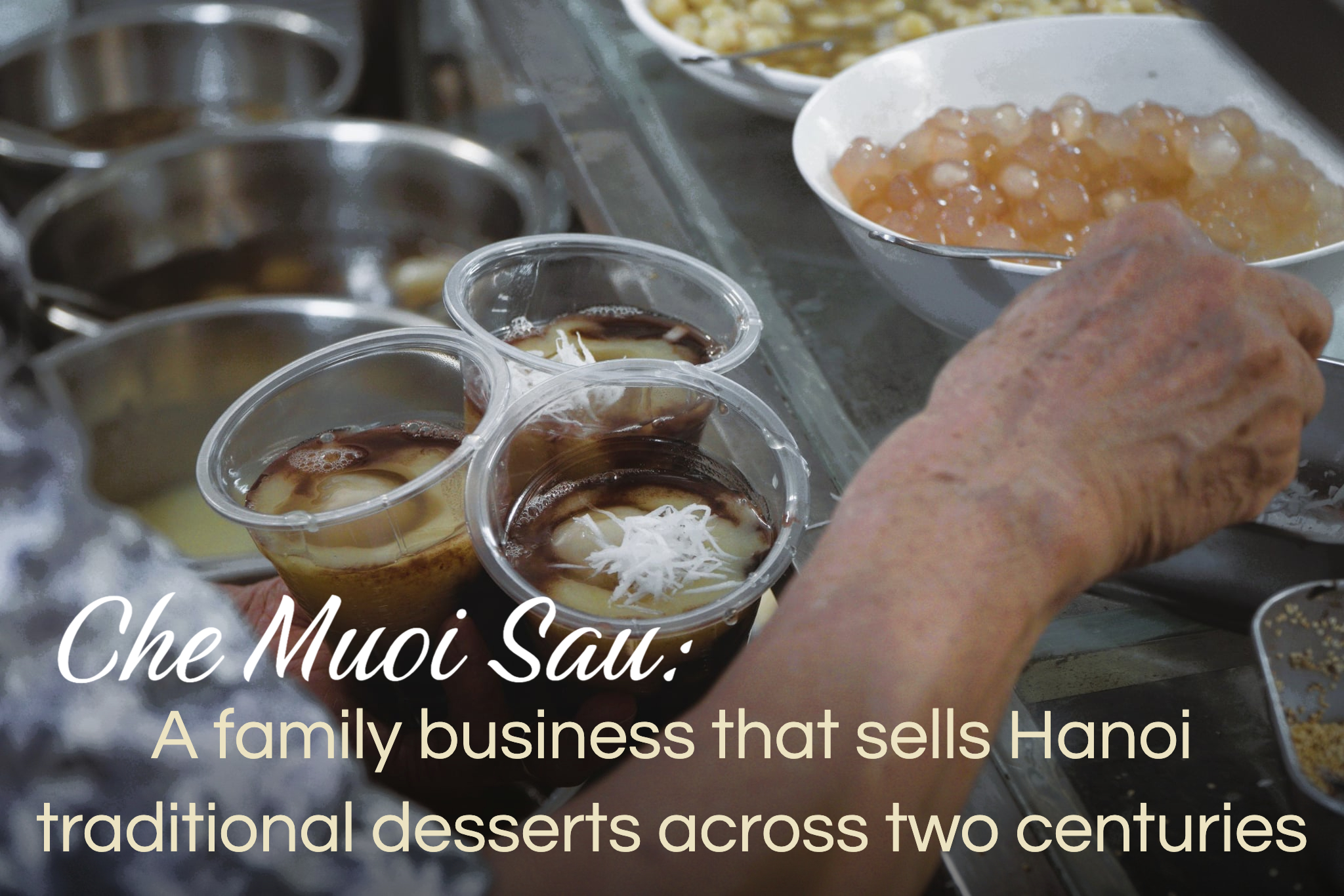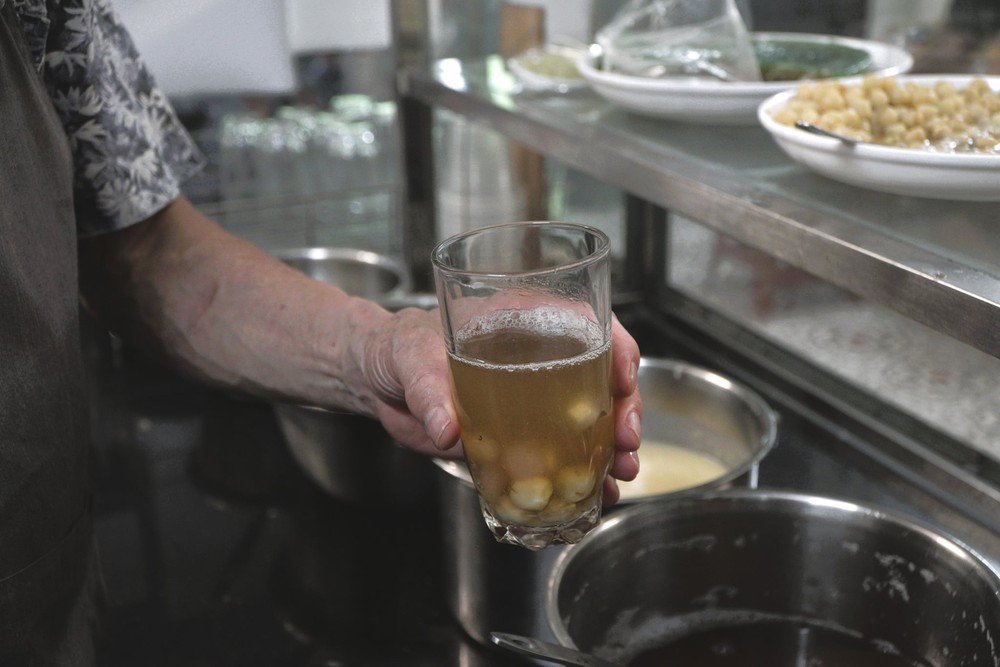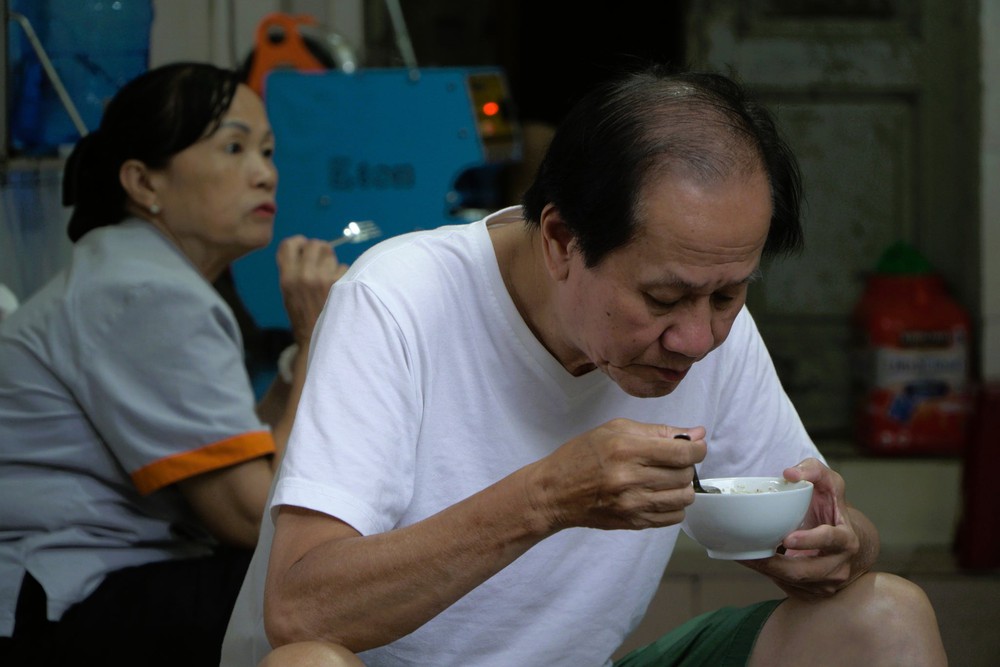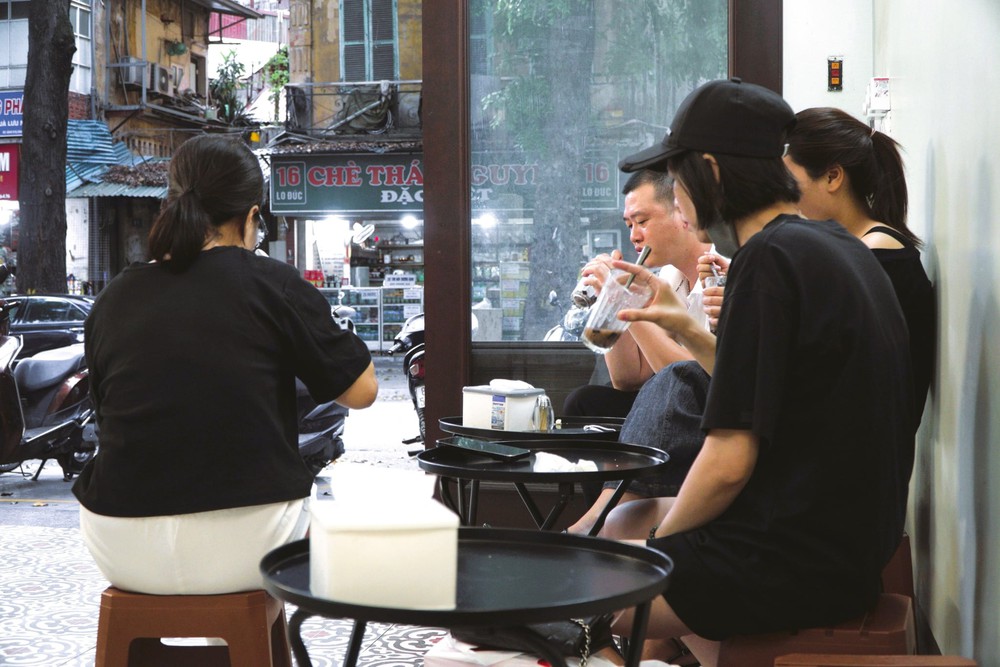Please enter Email
Email Invalid Format
Please enter your Full Name.

Hanoi is home to many renowned che shops, but among them, Che Muoi Sau has stood the test of time as a place where traditional Hanoi flavors are faithfully preserved.
Che, often translated as sweet soup, is a common Vietnamese dessert with many variations, usually made from beans, rice, sugar, and other ingredients.
Che Muoi Sau traces its origin to Nguyen Thi Nghia Loc, a woman born into a well-off family in Hanoi.
According to her son-in-law, Pham Xuan Thanh, women in Hanoi at the time were raised to uphold traditional values, including strong cooking skills.
Between 1958 and 1960, as the family’s fortunes declined, she began making che and selling it on the streets before settling into a stall at Hom Market.
In the early 1980s, her children took over the business but moved it to 16 Ngo Thi Nham Street, where the family lived.
The shop initially had no name until Thanh decided to call it Che Muoi Sau.
He said the name referred partly to the shop’s address, and partly to the belief that 16 is an age when people especially enjoy che.



The shop’s delicacies are loved by both the young and the elderly. Photo: Dau Dung / Tuoi Tre
Last year, Thanh and his wife opened a new branch on Lo Duc Street, while her younger sister’s family continued to run the original stall on Ngo Thi Nham.
Both locations now operate under the same name, Che Muoi Sau.
The original Che Muoi Sau location is now run by the family of Tran’s younger sister. Photo: Dau Dung / Tuoi Tre
A new Che Muoi Sau branch was opened on Lo Duc Street last year. Photo: Dau Dung / Tuoi Tre
According to Thanh, although colorful and creative dishes of che have become popular, Che Muoi Sau has always aimed to preserve the soul and traditional flavors of Hanoi.
He emphasized the phrase “pure Hanoi” as the slogan that has guided the shop for nearly half a century.
Unlike southern-style che, which often features a lot of colors, coconut milk, and blended flavors, Hanoi che is exactly what the eye sees, Thanh said.
At first glance, it may seem plain, but it is genuine and reflects the lifestyle of old Hanoians, he added.
Vu Thi Minh Tran, Nghia Loc’s daughter and Thanh’s wife, shared that the secret to a good bowl of che is simple: use clean, high-quality ingredients.
Each type is cooked on its own: mung beans, black beans, and sticky rice are never mixed or blended.
Tran and Thanh, the husband-and-wife duo, are among the driving forces behind the business. Photo: Dau Dung / Tuoi Tre
While machines are used in some steps to reduce manual labor, others are still done entirely by hand, such as shaping the coconut-filled tapioca pearls.
All the soups are made fresh daily, with a new batch cooked as soon as the previous one sells out and no leftovers carried over to the next day.
It's hard for the owners to keep track of how many cups they sell each day. Video: Dau Dung / Tuoi Tre
Che Muoi Sau’s menu is diverse, with traditional staples including lotus seed with coconut, mung beans, black beans, mung beans with lotus seed, black beans with lotus seed, xoi che (sticky rice with che), che kho (Vietnamese mung bean pudding) and floating glutinous rice balls.
Thanh said the shop has also added new options such as che thap cam (mixed sweet soup) to meet customer demand.
He said in summer, people prefer lighter options like lotus seed with coconut or mung and black beans.
Lotus seeds are simmered until soft and tender, yet they retain their shape. Photo: Dau Dung / Tuoi Tre
Meanwhile, in autumn and winter, they lean towards hot glutinous balls with ginger for warmth.
During Tet, dishes like che kho, che con ong (honeycomb-shaped pudding), xoi vo (rubbed sticky rice with mung beans), or xoi vo gac (rubbed glutinous rice with gac fruit) are especially popular, he explained.
Like Hanoi’s changing weather, each bowl of che at Che Muoi Sau carries the rhythm of the seasons.
Che Muoi Sau is known for its gentle, refined sweetness, standing apart from overly sugary versions elsewhere. Photo: Dau Dung / Tuoi Tre
Since the 1990s, many southern-style sweet soups have made their way north, but Tran said she feels happy that her family continues to sell authentic Hanoi sweet soup.
Whenever she thinks of her old house, where she lived for 70 years, Tran recalls her hardworking mother and the Hanoi traditional che that helped the family endure hardship with grace, kindness and resilience.
Please enter Display Name
Please enter Email
Email Invalid Format
Please enter Email
Email Invalid Format
Incorrect password.
Incorrect login information.
Account locked, please contact administrator.
An error occurred. Please try again later.
Max: 1500 characters
There are no comments yet. Be the first to comment.